Showing Spotlights 1121 - 1128 of 2876 in category All (newest first):
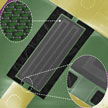 The key challenges associated with the development of high performance MEMS and NEMS resonators for RF wireless communication and sensing applications are the isolation of energy-dissipating mechanisms and scaling of the device volume in the nanoscale size-range. Researchers show that graphene-electrode based piezoelectric NEMS resonators operate at their theoretical 'unloaded' frequency-limits, with significantly improved electromechanical performance compared to metal-electrode counterparts, despite their reduced volumes.
The key challenges associated with the development of high performance MEMS and NEMS resonators for RF wireless communication and sensing applications are the isolation of energy-dissipating mechanisms and scaling of the device volume in the nanoscale size-range. Researchers show that graphene-electrode based piezoelectric NEMS resonators operate at their theoretical 'unloaded' frequency-limits, with significantly improved electromechanical performance compared to metal-electrode counterparts, despite their reduced volumes.
Jun 16th, 2015
 Researchers have developed a novel 3D-printing based method to produce highly monodisperse core/shell capsules that can be loaded with biomolecules such as therapeutic drugs. The method provides a robust control over particle properties, passive release kinetics, and particle distributions throughout a 3D matrix. Furthermore, these capsules are rendered stimuli-responsive by incorporating gold nanorods into the polymer shell, allowing for highly selective photothermal rupture and triggered temporal release of the biomolecular payload.
Researchers have developed a novel 3D-printing based method to produce highly monodisperse core/shell capsules that can be loaded with biomolecules such as therapeutic drugs. The method provides a robust control over particle properties, passive release kinetics, and particle distributions throughout a 3D matrix. Furthermore, these capsules are rendered stimuli-responsive by incorporating gold nanorods into the polymer shell, allowing for highly selective photothermal rupture and triggered temporal release of the biomolecular payload.
Jun 15th, 2015
 Over the last twenty years, scientists have developed many techniques to synthesize polymeric nanoparticles for a wide range of applications including surface coating, sensor technology, catalysis, and nanomedicine. However, the precise control of the size and shape of polymer nanoparticles remains challenging, and RDRP techniques still fall well short of producing large, well-defined macromolecules with the same size and degree of precision as nature (proteins, nucleic acids, etc.). In new work, researchers have developed a new technique to precisely control the size and shape of polymeric nanoparticles.
Over the last twenty years, scientists have developed many techniques to synthesize polymeric nanoparticles for a wide range of applications including surface coating, sensor technology, catalysis, and nanomedicine. However, the precise control of the size and shape of polymer nanoparticles remains challenging, and RDRP techniques still fall well short of producing large, well-defined macromolecules with the same size and degree of precision as nature (proteins, nucleic acids, etc.). In new work, researchers have developed a new technique to precisely control the size and shape of polymeric nanoparticles.
Jun 5th, 2015
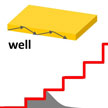 According to Planck's law, the emittance of a non-reflective black object - a blackbody - defines the maximum level of thermal emittance from an arbitrary object. Planck's law has been challenged in recent decades by predictions and successful demonstrations of the radiative heat transfer between objects separated by nanoscale gaps that deviate significantly from the law predictions. Researchers have now demonstrated another way to modify the object thermal emission spectrum and to force it to deviate from the one predicted by Planck's law.
According to Planck's law, the emittance of a non-reflective black object - a blackbody - defines the maximum level of thermal emittance from an arbitrary object. Planck's law has been challenged in recent decades by predictions and successful demonstrations of the radiative heat transfer between objects separated by nanoscale gaps that deviate significantly from the law predictions. Researchers have now demonstrated another way to modify the object thermal emission spectrum and to force it to deviate from the one predicted by Planck's law.
Jun 2nd, 2015
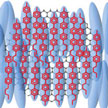 Graphene acts as an excellent conductor to electric fields along its flat surface and as an insulator perpendicular to the surface. Due to this anisotropic nature of graphene's conductivity, graphene flakes have potential applications in nanoscale switches and nano-electromechanical systems. Controlling the orientation of graphene flakes therefore has drawn a great deal of research interest in nanotechnology. In new work, researchers have developed a technique to control the orientation of graphene flakes at the nanoscale by using a nematic liquid crystal platform.
Graphene acts as an excellent conductor to electric fields along its flat surface and as an insulator perpendicular to the surface. Due to this anisotropic nature of graphene's conductivity, graphene flakes have potential applications in nanoscale switches and nano-electromechanical systems. Controlling the orientation of graphene flakes therefore has drawn a great deal of research interest in nanotechnology. In new work, researchers have developed a technique to control the orientation of graphene flakes at the nanoscale by using a nematic liquid crystal platform.
May 25th, 2015
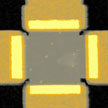 Magnetic field sensors are in very high demand for precise measurements of position, proximity and motion. The most commonly used Hall Effect devices are fabricated with silicon. The sensitivities of these sensors - voltage and current - depend on the device materials electronic properties such as charge carrier mobility and density. However, for futuristic advanced applications higher sensitivity Hall sensors are required than can be achieved with silicon. Researchers now have set a new world record for the sensitivity of Hall sensors using highest quality graphene encapsulated in hexagonal boron nitride.
Magnetic field sensors are in very high demand for precise measurements of position, proximity and motion. The most commonly used Hall Effect devices are fabricated with silicon. The sensitivities of these sensors - voltage and current - depend on the device materials electronic properties such as charge carrier mobility and density. However, for futuristic advanced applications higher sensitivity Hall sensors are required than can be achieved with silicon. Researchers now have set a new world record for the sensitivity of Hall sensors using highest quality graphene encapsulated in hexagonal boron nitride.
May 21st, 2015
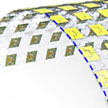 Researchers present materials and device design/fabrication strategies for an array of highly stable and uniform SWCNT-based stretchable electronic devices consisting of capacitors, charge-trap floating-gate memory units, and logic gates (inverters and NAND/NOR gates). The researchers' detailed material, electrical, and mechanical characterizations and theoretical analysis in mechanics provide useful insights in the design and development of SWCNT-based wearable electronic systems.
Researchers present materials and device design/fabrication strategies for an array of highly stable and uniform SWCNT-based stretchable electronic devices consisting of capacitors, charge-trap floating-gate memory units, and logic gates (inverters and NAND/NOR gates). The researchers' detailed material, electrical, and mechanical characterizations and theoretical analysis in mechanics provide useful insights in the design and development of SWCNT-based wearable electronic systems.
May 13th, 2015
 The most common method for making nanofibers employs electrospinning that uses an electrical charge to draw nanofibers from a polymeric solution. This technique utilizes large voltages and is strongly influenced by the dielectric properties of the material. It is also impossible to electrospin many biopolymers without blending with another polymer. Addressing these drawbacks, a team of researchers report a new method - magnetospinning - which utilizes a simple set-up that is independent of the dielectric constant of the solvent and polymer used.
The most common method for making nanofibers employs electrospinning that uses an electrical charge to draw nanofibers from a polymeric solution. This technique utilizes large voltages and is strongly influenced by the dielectric properties of the material. It is also impossible to electrospin many biopolymers without blending with another polymer. Addressing these drawbacks, a team of researchers report a new method - magnetospinning - which utilizes a simple set-up that is independent of the dielectric constant of the solvent and polymer used.
May 11th, 2015
 The key challenges associated with the development of high performance MEMS and NEMS resonators for RF wireless communication and sensing applications are the isolation of energy-dissipating mechanisms and scaling of the device volume in the nanoscale size-range. Researchers show that graphene-electrode based piezoelectric NEMS resonators operate at their theoretical 'unloaded' frequency-limits, with significantly improved electromechanical performance compared to metal-electrode counterparts, despite their reduced volumes.
The key challenges associated with the development of high performance MEMS and NEMS resonators for RF wireless communication and sensing applications are the isolation of energy-dissipating mechanisms and scaling of the device volume in the nanoscale size-range. Researchers show that graphene-electrode based piezoelectric NEMS resonators operate at their theoretical 'unloaded' frequency-limits, with significantly improved electromechanical performance compared to metal-electrode counterparts, despite their reduced volumes.
 Subscribe to our Nanotechnology Spotlight feed
Subscribe to our Nanotechnology Spotlight feed





